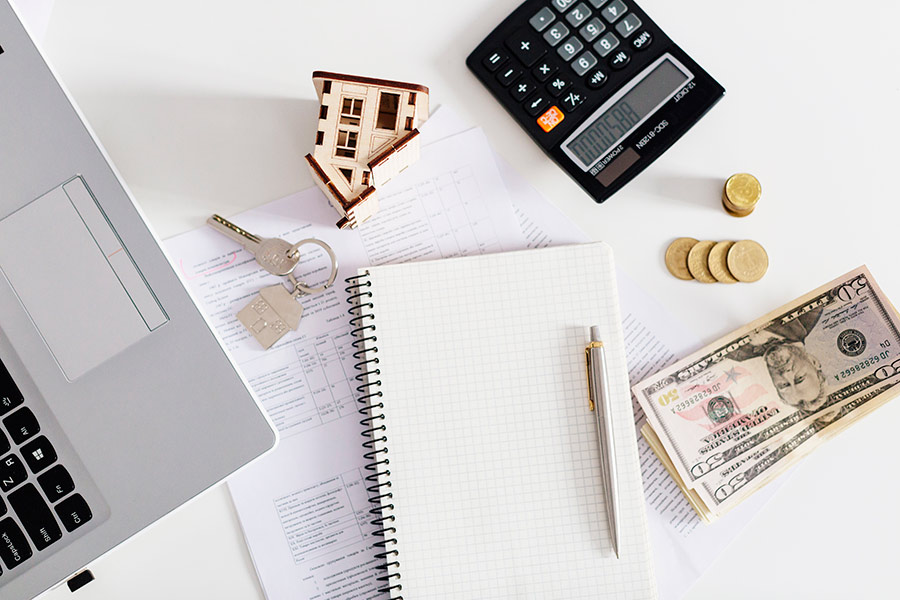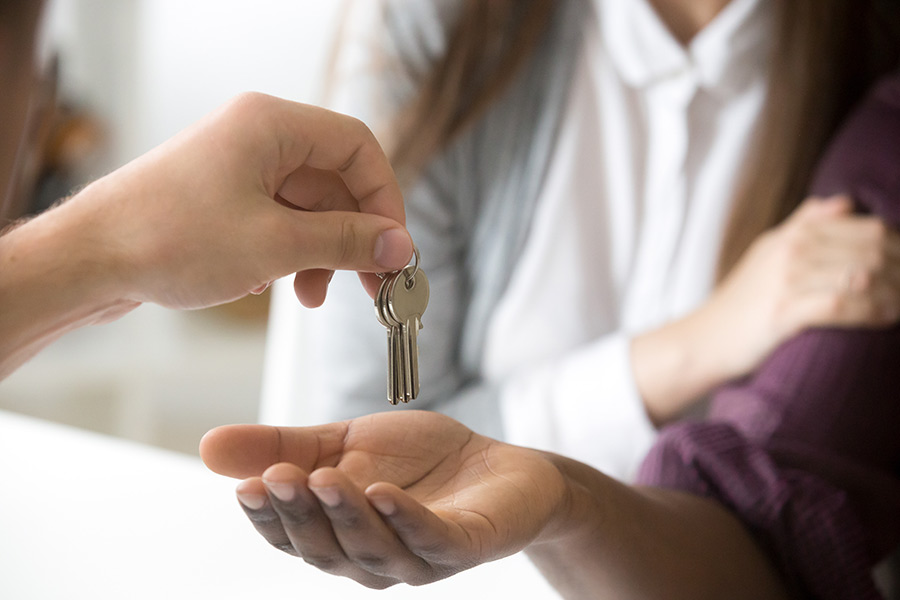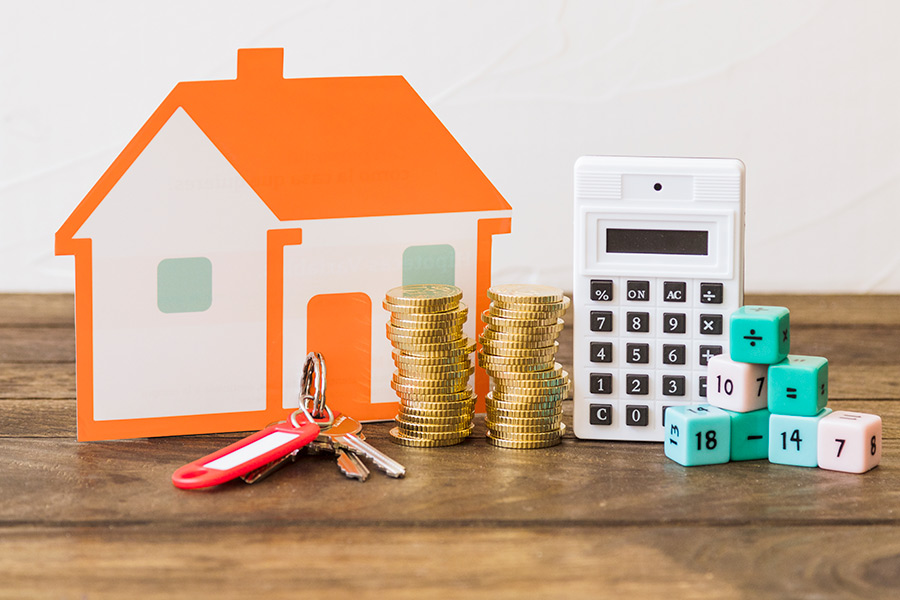
As a homeowner or a prospective one, understanding mortgage rates is crucial. It’s not just about finding the right house; it’s about securing the best financing for your investment. Mortgage rates fluctuate, influenced by various factors, and one of the significant determinants is the labor market. Let’s delve into how the labor market and other factors can sway mortgage rates, and what it means for homeowners and future homeowners alike.
The labor market is a key indicator of economic health. When employment rates are high, and wages are increasing, it signifies a robust economy. Conversely, high unemployment rates or stagnant wage growth can signal economic challenges. Mortgage lenders closely monitor these indicators because they directly impact borrowers’ ability to repay loans.
In a strong labor market, lenders may feel more confident in extending credit, leading to lower mortgage rates. When people have stable jobs and steady incomes, they’re more likely to qualify for mortgages and make timely payments. On the other hand, a weak labor market may prompt lenders to tighten lending standards or raise interest rates to mitigate the risk of defaults.
The Federal Reserve plays a significant role in shaping mortgage rates. Through its monetary policy tools, such as adjusting the federal funds rate and conducting quantitative easing, the Fed influences short-term interest rates. While mortgage rates aren’t directly tied to the federal funds rate, they often move in tandem, albeit with some lag.
When the Fed raises the federal funds rate to curb inflation or stimulate economic growth, mortgage rates tend to rise as well. Conversely, when the Fed lowers rates to spur borrowing and investment, mortgage rates typically follow suit. Therefore, keeping an eye on the Fed’s decisions and statements can provide insights into the direction of mortgage rates.
Apart from the labor market and the Fed, mortgage rates are also influenced by market forces and investor sentiment. Mortgage-backed securities (MBS), which represent bundles of mortgages sold to investors, play a crucial role in determining mortgage rates. When investors demand higher yields on MBS due to perceived risks or better returns elsewhere, mortgage rates rise.
Moreover, geopolitical events, economic data releases, and even market speculation can impact investor sentiment and drive fluctuations in mortgage rates. Uncertainty often leads to volatility in financial markets, causing lenders to adjust rates accordingly. Therefore, homeowners and prospective buyers should stay informed about global events and economic indicators that could affect mortgage rates.
For current homeowners, monitoring mortgage rates can present opportunities for refinancing. If rates drop significantly from when you initially obtained your mortgage, refinancing could lower your monthly payments or shorten your loan term, potentially saving you thousands of dollars in interest over time. However, it’s essential to consider closing costs and how long you plan to stay in your home before refinancing.
For future homeowners, understanding the factors influencing mortgage rates can help with timing your home purchase. While it’s challenging to predict rate movements with certainty, paying attention to economic indicators and market trends can inform your decision-making process. Additionally, maintaining a strong credit score and reducing debt can improve your chances of securing favorable mortgage rates when you’re ready to buy.
Mortgage rates are influenced by a myriad of factors, with the labor market being a significant driver. By staying informed about economic trends, central bank policies, and market dynamics, homeowners and future homeowners can navigate the mortgage landscape more effectively. Whether you’re refinancing an existing mortgage or planning to buy your dream home, understanding the interplay of these factors is essential for making informed financial decisions.

Owning a vacation rental property can be a lucrative venture, offering the potential for passive income and the opportunity to share your slice of paradise with travelers from around the world. However, success in this endeavor requires more than just listing your property on a rental platform and waiting for bookings to roll in. To truly thrive in the vacation rental market, it’s essential to understand the dos and don’ts of property ownership and management. Here’s a comprehensive guide to help you navigate the ins and outs of running a successful vacation rental business.
Providing top-notch amenities such as comfortable furnishings, high-speed internet, well-equipped kitchens, and luxurious linens can set your vacation rental apart from the competition and attract discerning guests.
Cleanliness is paramount in the vacation rental industry. Ensure that your property is thoroughly cleaned and sanitized between guests to guarantee a pleasant and hygienic experience for every visitor.
Transparency is key to building trust with potential guests. Be upfront about your property’s amenities, rules, and any potential quirks to manage guest expectations effectively.
Promptly respond to inquiries and address any concerns or issues that arise during your guests’ stay. Providing exceptional customer service can lead to positive reviews and repeat bookings.
Research comparable properties in your area to determine a competitive pricing strategy that reflects the value of your vacation rental while remaining attractive to potential guests.
Establishing a guest screening process can help mitigate the risk of problematic guests and ensure a positive experience for both you and your visitors.
Pay attention to the little details that can make your guests feel at home, such as providing a welcome basket, personalized recommendations for local attractions, and clear instructions for using amenities.
Regular maintenance is essential to keep your vacation rental in top condition. Neglecting maintenance tasks can lead to costly repairs and dissatisfied guests.
Avoid exaggerating your property’s features or misrepresenting its condition in your listing. Honesty is crucial for maintaining a positive reputation in the vacation rental market.
Guest feedback can provide valuable insights into areas where your vacation rental excels and areas for improvement. Take feedback seriously and make necessary adjustments to enhance the guest experience.
Accidents and unexpected events can occur in any rental property. Make sure you have adequate insurance coverage to protect your investment and liability as a vacation rental owner.
Familiarize yourself with local regulations and zoning laws governing vacation rentals in your area. Failure to comply with these regulations can result in fines or legal consequences.
While it’s essential to set clear rules and expectations for your guests, avoid micromanaging their stay. Trust your guests to respect your property and enjoy their vacation responsibly.
While online rental platforms are valuable tools for marketing your vacation rental, diversify your marketing efforts to reach a broader audience. Utilize social media, email marketing, and partnerships with local businesses to attract guests.
In conclusion, owning a vacation rental can be a rewarding venture with the potential for financial success and personal fulfillment. By following these dos and don’ts, you can maximize the profitability of your property while providing exceptional experiences for your guests. With careful planning, attention to detail, and a commitment to excellence, you can create a thriving vacation rental business that stands out in the competitive market.

In an ever-changing economic landscape, the pursuit of financial stability remains a constant goal for individuals and families alike. While the methods of saving money have evolved over time, the essence of smart financial management remains steadfast. This blog explores a blend of new-age strategies and timeless practices that can help you build a robust savings plan.
The digital era has ushered in innovative ways to save money effortlessly. Budgeting apps, for instance, empower individuals to track their expenses, set savings goals, and receive real-time insights into their financial health. Automating savings through these apps ensures that a portion of your income is stashed away before you even have the chance to spend it. Furthermore, cashback and reward programs offered by various fintech platforms provide additional opportunities to save while making routine purchases.
A contemporary approach to saving money involves embracing sustainable living practices. Energy-efficient appliances, eco-friendly transportation options, and reducing overall consumption contribute not only to environmental conservation but also to significant cost savings. Choosing to buy products with a longer lifespan may involve a higher initial investment, but the reduced need for replacements translates into long-term financial benefits.
The gig economy has flourished in recent years, providing individuals with opportunities to earn additional income through side hustles. Whether it’s freelancing, driving for ride-sharing services, or participating in the sharing economy, these gigs offer flexibility and a chance to supplement your primary income. The extra money earned can be directed towards savings, helping you achieve your financial goals faster.
While exploring new ways to save is essential, it’s equally important not to overlook the wisdom of traditional money-saving practices. The age-old advice of “pay yourself first” still holds true. Setting aside a fixed percentage of your income as savings before allocating funds to other expenses ensures that your financial future is a priority. Additionally, cultivating a habit of distinguishing between wants and needs enables more conscious spending, preventing unnecessary expenses.
The Do-It-Yourself (DIY) culture is gaining popularity as a means of saving money while fostering creativity. Repurposing old furniture, upcycling clothing, or even growing your own produce can significantly reduce expenses. Not only does this approach promote sustainability, but it also instills a sense of accomplishment, knowing that you can create and maintain items without relying solely on purchases.
In the dynamic landscape of personal finance, the key to effective money management lies in a balanced combination of new-age strategies and timeless practices. Embracing technology, exploring the gig economy, and adopting sustainable living practices align with the contemporary world’s demands. However, traditional wisdom, such as prioritizing savings and distinguishing between wants and needs, remains the bedrock of a secure financial future. By integrating both the old and the new, individuals can navigate the complexities of modern finance while building a resilient and sustainable savings plan.

Preparing to buy a house involves more than just browsing listings. Here’s an in-depth guide on five crucial steps, with an emphasis on credit scores and the pre-approval process, to get you ready for this significant milestone:
Achieving financial stability and understanding your credit health is pivotal when preparing to buy a house.
Credit Score Management
Your credit score plays a crucial role in securing a favorable mortgage rate. Aim for a score above 700 for better rates. Here’s how to improve it:
Getting pre-approved for a mortgage gives you a clearer understanding of your budget and streamlines the house-hunting process.
Pre-Approval Process
Understanding your requirements versus desires helps narrow down the search for your dream home.
Partnering with experts can simplify the buying process and provide valuable insights.
Beyond the down payment, you need to prepare for additional expenses associated with buying a house.
By focusing on your financial health, understanding the mortgage process, defining your needs, seeking expert guidance, and preparing for associated expenses, you’ll be well-equipped to embark on the journey of buying a house with confidence.

The long-awaited news has finally arrived for both homebuyers and sellers alike—the mortgage rates have descended below the monumental 7% threshold. For many, this pivotal moment marks a significant turn in the real estate landscape, bringing forth a cascade of opportunities and advantages.
For prospective homeowners, this plunge in mortgage rates is nothing short of a golden opportunity. With rates now dipping below 7%, the affordability of owning a home has vastly improved. For those who have been patiently waiting on the sidelines, this could be the signal to take the plunge into homeownership.
Lower mortgage rates translate directly into reduced monthly payments. For instance, a rate drop from 7% to 6% on a $300,000 loan could save homeowners hundreds of dollars each month. Such savings not only ease the financial burden but also expand the range of homes that become realistically attainable.
Moreover, these lowered rates might enable more buyers to qualify for loans, potentially increasing the pool of eligible purchasers. As a result, the real estate market may experience heightened activity, leading to a healthier and more dynamic ecosystem.
On the flip side, sellers are poised to benefit from this scenario as well. Reduced mortgage rates often stimulate demand, attracting more buyers into the market. Increased demand usually translates to quicker property sales and potentially multiple offers, empowering sellers to negotiate better terms and prices.
Additionally, the widened pool of potential buyers—thanks to improved affordability—could mean a higher chance of finding the right match for a property. Consequently, sellers may experience reduced time spent on the market, a scenario that’s ideal for anyone looking to swiftly close a deal.
Beyond the immediate impact on buyers and sellers, falling mortgage rates can set off a series of positive effects across various sectors of the economy. Consumer spending often sees a boost when individuals have lower monthly mortgage obligations, potentially contributing to economic growth.
The construction industry might experience an uptick as well. Lower rates can incentivize home building and renovations, spurring economic activity and creating job opportunities in related fields. This domino effect can reverberate throughout the economy, offering a more comprehensive spectrum of advantages.
While the allure of decreased mortgage rates is undeniable, it’s essential to approach this shift with a measure of caution. Economic landscapes are complex and subject to change. It’s prudent for buyers to consider their long-term financial health and not stretch beyond their means, even with more attractive rates.
Similarly, sellers should remain mindful of market dynamics. While reduced rates could fuel demand, local market conditions, pricing strategies, and property condition still play significant roles in achieving a successful sale.
In conclusion, the plunge in mortgage rates below 7% represents a watershed moment for both homebuyers and sellers. The opportunities arising from this shift have the potential to reshape the real estate landscape, fostering increased activity, enhanced affordability, and a healthier market overall. However, prudent decision-making remains crucial for all involved parties to leverage these advantages effectively.

As the New Year approaches, setting goals is a tradition that brings excitement and determination. If your ambition for the upcoming year is to buy a house, there are several crucial steps to take now to ensure a smooth and successful process.
Start by defining your objectives clearly. Ask yourself what type of house you want, where you want to live, and what amenities or features are essential. Simultaneously, assess your financial standing. Determine your budget, including your savings, credit score, and potential mortgage amount.
Your credit score plays a pivotal role in securing a mortgage. Obtain a credit report to ensure accuracy and address any discrepancies. Pay down debts, if possible, and maintain a good credit utilization ratio. Additionally, build up your savings for the down payment and closing costs.
Seek pre-approval from various lenders to understand the mortgage options available to you. Compare interest rates, loan terms, and fees to choose the most suitable option. A pre-approval not only demonstrates your seriousness to sellers but also provides a clear picture of your budget.
Familiarize yourself with the housing market in your desired area. Monitor trends, property prices, and inventory. Understanding the market conditions will help you make informed decisions and negotiate effectively.
Engage a trusted real estate agent who understands your preferences and goals. An experienced agent can guide you through the process, offer valuable insights, and help you navigate the complexities of buying a home.
Once you’ve established your criteria and enlisted the help of an agent, begin the exciting phase of house-hunting. Attend open houses, schedule viewings, and explore various neighborhoods to get a feel for what’s available and what suits your needs best.
When you find the perfect home, work with your agent to craft a compelling offer. Consider market conditions, the property’s value, and potential negotiation points. Your agent’s expertise will be invaluable in this phase, especially during counteroffers and finalizing the deal.
Once your offer is accepted, prepare for the closing process. Secure necessary inspections, finalize your mortgage, and ensure all paperwork is in order. Be ready for unforeseen challenges and work closely with your agent and lender to resolve any issues that may arise.
On the closing day, review and sign the paperwork. Be prepared to pay closing costs and the down payment. After the signing, the house keys will be handed over, and you officially become a homeowner!
After closing the deal, celebrate your accomplishment and prepare for the move-in. Plan your move, set up utilities, and gradually settle into your new home.
Buying a house is a significant milestone, and planning ahead is crucial for a successful purchase. By taking these proactive steps now, you’ll be well-prepared to achieve your New Year’s resolution of becoming a homeowner. With determination, patience, and the right preparation, your dream home could soon become a reality!

For many, the dream of homeownership comes hand in hand with the complex world of mortgages. The terminology alone can be overwhelming, but one term that’s worth exploring is “assumable loans.” What exactly is an assumable loan, and could it be the right option for you?
An assumable loan, as the name suggests, is a type of mortgage that can be assumed or taken over by another borrower. In essence, when you purchase a home with an assumable loan, you have the option to let another qualified individual step into your shoes and take over your mortgage, assuming responsibility for the remaining balance, interest rate, and terms.
Assumable loans typically come in two forms: FHA (Federal Housing Administration) and VA (Department of Veterans Affairs) loans. Conventional loans, on the other hand, are rarely assumable.
Now that you understand what an assumable loan is, the next question is whether it’s the right option for you. Here are some factors to consider:
In summary, an assumable loan can be a valuable tool when selling your home, but it’s not a one-size-fits-all solution. Your decision should be based on factors like interest rates, market conditions, and your own financial situation. It’s essential to consult with a qualified mortgage professional to fully understand the implications of an assumable loan and whether it aligns with your goals as a homeowner. Ultimately, the right choice depends on your unique circumstances and objectives in the real estate market.

Mortgage rates play a significant role in the housing market, affecting affordability for potential homebuyers and those looking to refinance. However, predicting and influencing mortgage rates isn’t straightforward. Understanding the factors that influence them can offer insights into what might lead to lower rates.
The Federal Reserve’s monetary policy is a major factor in mortgage rate fluctuations. When the Fed lowers short-term interest rates, mortgage rates tend to follow suit. This is done to stimulate economic growth during tough times. So, if you’re hoping for lower mortgage rates, keep an eye on the Fed’s decisions and economic indicators.
Mortgage rates are closely tied to the state of the economy. In robust economic times, interest rates tend to rise. Conversely, during economic downturns or periods of uncertainty, rates may decrease to boost borrowing and spending. Factors like GDP growth, employment rates, and inflation can impact mortgage rates. To see rates fall again, it may require economic uncertainty or a need for economic stimulus.
Inflation affects mortgage rates significantly. High inflation prompts lenders to demand higher interest rates to compensate for the diminishing purchasing power of money. Central banks might raise interest rates to combat inflation. Conversely, low and manageable inflation can keep mortgage rates stable or even push them lower. Keeping inflation in check is vital for lower mortgage rates.
Global events and geopolitical tensions can impact mortgage rates. Investors often turn to safe investments like U.S. government bonds during times of uncertainty. This drives up bond prices and lowers yields, influencing mortgage rates. Major global events, such as trade disputes or financial crises, can trigger these fluctuations. For mortgage rates to fall, a more stable global environment might be necessary.
The housing market itself can influence mortgage rates. A surplus of available homes can exert downward pressure on home prices, potentially leading to lower mortgage rates. Lenders may also offer more competitive rates during slower housing market periods. To witness lower mortgage rates, a buyer’s market or a slowdown in home sales may be required.
Government policies play a role in mortgage rates. Programs like the Federal Housing Administration (FHA) or Veterans Affairs (VA) loans often have lower interest rates. Government initiatives aimed at promoting homeownership or stimulating housing demand can also influence rates. To achieve lower mortgage rates, governments may need to implement or extend such programs.
While we can’t predict mortgage rates with certainty, it’s best to stay informed about these factors and economic developments to make the most of opportunities in the mortgage market.

HELOC, short for Home Equity Line of Credit, is a popular financial tool that allows homeowners to tap into the equity they’ve built up in their homes. It’s like having a flexible credit card tied to your home. Sounds intriguing, right? Well, let’s break it down and see what benefits and drawbacks come along with this financial option.
Flexibility and convenience: One of the major advantages of a HELOC is its flexibility. You have access to a predetermined credit limit, and you can borrow as much or as little as you need, up to that limit. This flexibility is handy when you have varying financial needs like home renovations, tuition fees, or unexpected expenses. Plus, you can choose when and how much to borrow, making it convenient for managing your cash flow.
Lower interest rates: Compared to other forms of borrowing, such as credit cards or personal loans, HELOCs often come with lower interest rates. Why is that? Well, since your home is used as collateral, lenders generally consider it less risky, resulting in more favorable interest rates. This lower rate can save you money over time, especially if you’re consolidating high-interest debt.
Tax-deductible interest: In some cases, the interest you pay on a HELOC may be tax-deductible, making it an attractive option for those looking to save on their taxes. However, it’s essential to consult a tax professional to understand the specific rules and regulations that apply to your situation.
Risk of foreclosure: With a HELOC, your home serves as collateral. This means that if you’re unable to make the required payments, you could be at risk of foreclosure. It’s crucial to carefully assess your financial situation and ensure that you’ll be able to meet the repayment obligations before considering a HELOC.
Variable interest rates: While the potential for lower interest rates is an advantage, it’s important to note that many HELOCs come with variable interest rates. This means that your monthly payments can fluctuate based on changes in the market. If interest rates rise significantly, it could lead to higher payments, making it challenging to budget and plan your finances.
Temptation to overspend: The accessibility and convenience of a HELOC can sometimes tempt individuals to overspend or use the funds for non-essential purposes. It’s crucial to exercise discipline and use the funds responsibly, keeping in mind that the borrowed amount needs to be repaid eventually.
Closing costs and fees: Similar to a mortgage, HELOCs often come with closing costs and various fees, such as appraisal fees, application fees, and annual maintenance fees. These additional costs can add up, so it’s important to consider them when evaluating the overall affordability of a HELOC.
Ultimately, whether a HELOC is right for you depends on your individual circumstances and financial goals. If you have a specific purpose for the funds, can comfortably meet the repayment obligations, and have a well-thought-out plan in place, a HELOC can be a valuable financial tool. However, it’s crucial to carefully weigh the pros and cons and consider alternatives before making a decision.

Purchasing a home is a significant financial decision, and one of the most critical factors is obtaining a mortgage. The process of getting a mortgage can be daunting and complex, and one of the first steps is obtaining a pre-approval. A pre-approval is essentially a lender’s guarantee that they are willing to lend you a specific amount of money based on your financial situation. In this blog, we will discuss the importance of getting a pre-approval for a mortgage and how it can benefit you in the long run.
One of the most significant benefits of getting a pre-approval is that it helps you determine your budget. Knowing how much you can borrow will allow you to search for homes within your price range. Without a pre-approval, you may be wasting your time looking at properties that are out of your budget or potentially missing out on homes that are within your range. Having a pre-approval will provide you with a clear understanding of what you can afford and help you make more informed decisions.
In a competitive housing market, a pre-approval can be the difference between getting the home of your dreams or losing out to another buyer. In a bidding war, a pre-approved buyer is more attractive to a seller because they have already taken the necessary steps to secure financing. Having a pre-approval shows that you are a serious buyer and gives the seller confidence that the sale will go through smoothly.
Obtaining a pre-approval will save you time and reduce stress in the long run. The pre-approval process involves providing the lender with financial information such as income, credit score, and debt-to-income ratio. Once the lender has reviewed your information, they will provide you with a pre-approval letter that outlines how much you can borrow. This process can take anywhere from a few days to a few weeks. However, once you have a pre-approval, the actual mortgage application process will be much quicker and more straightforward.
A pre-approval can also help you negotiate a better deal on your mortgage. Once you have a pre-approval, you can shop around for different lenders and compare interest rates and terms. This allows you to negotiate with your preferred lender and potentially get a better deal on your mortgage. Having a pre-approval gives you leverage when negotiating with lenders because they know you are serious about securing financing.
Finally, getting a pre-approval gives you peace of mind. Knowing that you have secured financing allows you to focus on finding the right home without worrying about the mortgage process. With a pre-approval, you have a clear understanding of your budget and can confidently make an offer on a home that meets your needs and fits your budget.
Like what you see? Make it Yours!